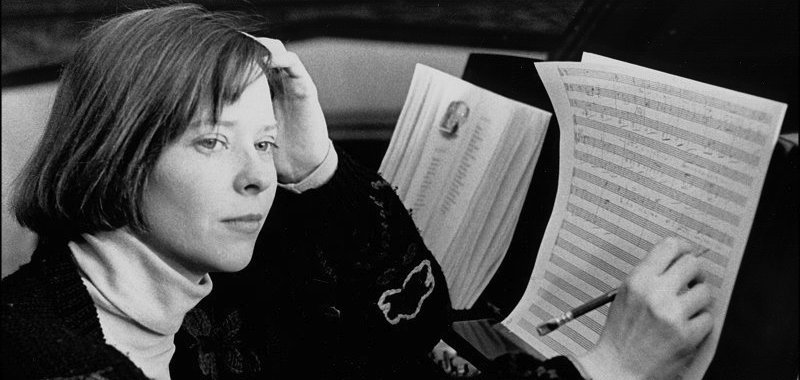5 German Arias for Baritone You Probably Didn't Know About
Finally, the baritones have their day. Of course, that is not as rare of an occurrence in opera as some would think. After three entries into the series- 5 German Arias for Soprano You Probably Didn’t Know About, 5 German Arias for Mezzo You Probably Didn’t Know About, and 5 German Arias for Tenor You Probably Didn’t Know About- we finally arrive at the sultriest and handsomest voice type. In the interest of full disclosure, I must say that I am a baritone myself, but do not worry fellow baritones- I'm not leaving out any great arias so I can hoard them in my personal collection. I have chosen my five favorite arias collected from my expeditions into IMSLP. Without further ado, 5 German Arias for Baritone You Probably Didn’t Know About.
The Run Down:
-
Includes Recitative: Yes
-
Run time with recitative: 5:20
-
Run time without recitative: 4:30
-
Range: G2 - F♯4
-
Tessitura: C3 - D4
-
What it shows: Coloratura, complete range, legato
-
What it doesn’t show: powerful or dramatic singing
Helpful links:
This isn’t your grandpa’s Faust aria, which is ironic considering that this aria pre-dates the famous Gounod adaptation of Goethe’s epic. In addition to the change in voice type from tenor to baritone, Faust is also singing a different tune, pun intended. Indicative of the time period, this aria is a pleasant synthesis of lyrical phrases to show line and legato, and melismatic sections to show agility and range. The jump in the first long melisma from low a A2 to a high F4 is particularly impressive. You always have the option to interpolate further, but what Sophr wrote is already quite impressive. If you want to keep this aria under the five minute mark, I would cut the recitative, but it is there if you need it.
The Run Down:
-
Includes Recitative: No
-
Run time: 4:50
-
Range: C3 - E4
-
Tessitura: D3 - D4
-
What it shows: Coloratura, rhtymic singing, text delivery
-
What it doesn’t show: Range, legato
Helpful links:
With a brisker tempo and more rhythmic motion than the previous entry, “Der Kriegeslust ergeben” manages to fit into the early romantic idiom without getting lost in stylistic tropes. It has the smallest range of all of the arias on this list, generally sitting lower on the staff. This tessitura would make it ideal for younger baritones, and it could even pass as a bass-baritone aria in a pinch. Don’t worry though, you guys will be getting your article soon.
The Run Down:
-
Includes Recitative: No
-
Run time: 4:50
-
Range: B2 - F4
-
Tessitura: F3 - F4
-
What it shows: Upper range, coluratura
-
What it doesn’t show: Lower register
Helpful links:
I must admit that I did not like this aria all that much when I first found it, but it has grown on me. What won me over was the numerous, full-bodied high notes the aria offers. While it does stay under the F natural ceiling- a very real thing for baritones- many of the F’s, of which there are 23, are full and sustained. It can be a bit repetitive and monotonous so you will have to “sell” it, but if you can get the audience there, the aria has a great ending.
The Run Down:
-
Includes Recitative: Yes
-
Run time: 5:10 with standard cut
-
Range: A2 - E4
-
Tessitura: F♯3 - F4
-
What it shows: Rhythmic singing, coluratura
-
What it doesn’t show: High range
Helpful links:
This aria stretches the “probably” in “arias you probably didn't know about” to its limit. “Heiterkeit und Fröhlichkeit” is a popular audition aria in Germany. The fact that it has appeared on the Wolf Trap Opera aria list for baritones only once in the last five years points to less familiarity in the states and clears my conscience to add it to this list. I'm happy that is the case, because it is a fun aria. In my opinion, the most fun aria on this list and one of the most enjoyable German arias in the baritone repertoire. If you want to use this aria in an audition situation, you will probably have to make a cut. Luckily, there is a very traditional cut that most recordings take anyway. Cut from the fourth measure of the fifth system, page 169, the words are "Seh ich Blumen blühen," to the second measure of the fourth system, page 171. This will bring the time down to five minutes.
The Run Down:
-
Includes Recitative: No
-
Run time: 2:15
-
Range: E♭3 - G♭4
-
Tessitura: F3 - D4
-
What it shows: Line
-
What it doesn’t show: Low notes
Helpful links:
Karl Goldmark’s Die Königin von Saba has provided a steady stream of arias for this series. “Magische Töne,” the tenor aria featured in our last installment, happens to be one of my favorite arias of all time. This aria, while not quite as captivating as other arias in this opera, has some important things to offer. First and formost, it is brief. Depending on how and where you end, you can be in and out right at 2:15. This puts it in the running with “Lieben, Hassen, Hoffen, Zagen” as one of the shortest German arias available. While "Blick empor zu jenen Räumen" is not as tuneful as "Lieben, Hassen" and is more recitative in nature. That being said, it goes up to a G flat and ends rather heroically. It isn’t a big enough moment to win you extra points, but it won’t hurt to sing it either.
Bonus Round:
The Run Down:
-
Includes Recitative: No
-
Run time: Varies depending upon the number of verses you sing.
-
Range: D3 - B4
-
Tessitura: G3 - F4
-
What it shows: Crazy high notes
-
What it doesn’t show: Low notes
Helpful links:
I wanted to include this aria, but I felt I would be robbing most baritones out of their fair share by only offering four “viable” aria options. You ask, “Why isn’t it viable?”. Simple: there are multiple high B’s. While they are brief, a B is a B. Maybe one of you would like to sing it for fun, or you can sing it in an audition and baffle the panel. Who am I to deny you access to an aria this fun? In order to hear the high B's as they were written, you'll have to listen to the spotify recording.








